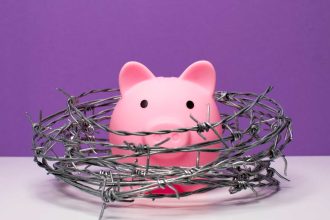By Kevin Buckland
TOKYO (Reuters) – The U.S. dollar eased back from a 10-week peak versus major peers on Tuesday, even as Treasury yields marched to fresh post-financial crisis highs, as traders awaited a potentially crucial speech from Federal Reserve Chair Jerome Powell later this week.
The yen pulled away from a nine-month trough after Bank of Japan Governor Kazuo Ueda met with the prime minister, although he said exchange-rate volatility was not discussed.
briefly popped to a one-week high as the central bank again tried to bolster the currency by setting a much stronger-than-anticipated daily mid-point, but those gains fizzled out quickly.
The – which measures the currency against six developed-market counterparts, including the yen and – slipped 0.14% to 103.18, but remained not far from Friday’s high of 103.68, a level not seen since June 12.
“Surging long-term U.S. yields and the underwhelming response by China’s policymakers to ongoing stresses in China’s property and financial markets continue to provide bullish impulse” to the U.S. dollar, Richard Franulovich, a currency strategist at Westpac, wrote in a note.
“If Chair Powell keeps the door ajar to (rate) hikes,” in his speech on Friday at the central bank’s annual symposium in Jackson Hole, Wyoming, “a new front for US$ upside can form,” with the potentially breaking above 104, he said.
Benchmark U.S. Treasury yields pushed to the highest since November 2007 at 4.366%, as the view that U.S. rates will stay high for longer continued to firm in the market’s mind.
Money markets currently lay a bit less than 50/50 odds for another 25 basis point Fed hike by November, before the central bank shifts to rate cuts next year.
The pair, however, shook off the rise in U.S. yields to trade 0.22% lower at 145.935. Traders are wary of intervention after levels around 146 spurred the first yen buying by Japanese officials in a generation last September.
On Thursday, the dollar reached 146.565 yen for the first time since Nov. 10.
The euro added 0.15% to $1.0912. Sterling gained 0.16% to $1.27765.
Meanwhile, China’s central bank set the yuan mid-point at 7.1992 per dollar on Tuesday, 1105 pips firmer than Reuters’ estimate, attempting to keep a floor under the currency following its slide to a 9-1/2-month low of 7.349 in offshore trading last week.
Tuesday’s fixing follows shallower and narrower interest rate cuts than markets had expected a day earlier, as Beijing stimulus measures continue to underwhelm despite increasing problems in the property sector and the economy as a whole.
The was little changed at 7.2934, after firming as much as 0.25% after the fixing.
The Australian dollar, which often trades as a proxy to China, was also little changed at $0.6417.
The Aussie has grinded higher in recent sessions after dropping to a 9-1/2-month low of $0.6365 on Thursday.
“It will likely take a big Chinese stimulus package focused on commodity‑intensive infrastructure spending to turn around the downtrend in ,” Kristina Clifton, senior currency strategist at Commonwealth Bank of Australia, wrote in a note, adding there is a “growing risk” for a dip below $0.60 this year.
Read the full article here





